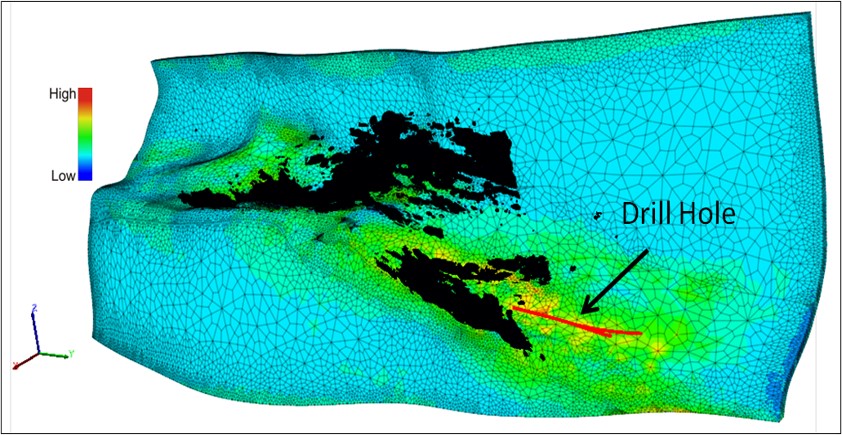Geomechanical Analysis

GMEX specialises in the application of coupled Geomechanical and Fluid-Flow Analysis based on good structural geology and tectonic understanding. Geomechanical models are critical in trying to understand the underlying geological process that formed the geological structures we see and measure. To make informed decisions on mineral exploration you need to understand the system. Gathering and interpreting only empirical data can make this difficult.
Modelling the system can provide many insights into structurally controlled mineral deposits, and increase your chances of discovery. The techniques applied can let us investigate both stress and strain partitioning during deformation events, which is usually the result of some combination of structures and competency contrasts. This partitioning generally controls fluid pathways and leads to much better predictive capacity. This is where the combination of techniques can provide maximum value, by incorporating the geomechanics into prospectivity analysis and combining with empirical datasets.
Data outputs from these types of analyses can be in both two and three dimensions. Three dimensional isosurface data or simple point datasets can be provided for explicit targeting e.g. from within mine exploration for mineralised extensions through to regional exploration. Two dimensional data can also be provided for tenement and regional exploration. This approach has just recently worked exceptionally well in the Gawler Craton of South Australia (See Gawler Challenge).
